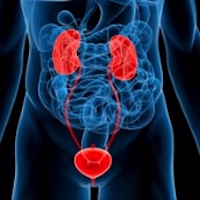A global snapshot of endourology residency training

Accepted: April 1, 2020
Supplementary Files: 95
All claims expressed in this article are solely those of the authors and do not necessarily represent those of their affiliated organizations, or those of the publisher, the editors and the reviewers. Any product that may be evaluated in this article or claim that may be made by its manufacturer is not guaranteed or endorsed by the publisher.
Authors
Background: Urology has become more complex over the last decades with surgical sophisticated technologies such as endoscopy, laparoscopy and robotic surgery. As these minimally invasive methods gain popularity throughout the world, this has led in some countries to a serious training gap as compared to other countries, and between generations of surgeons within national training systems. There is a huge heterogeneity in urological training between countries, whether developed or developing. This paper attempts to shed some light onto global urological training, comparing a significant number of various national systems, and to outline global tendencies in urological training. It will enable interested readers to see where their own system stands in international comparison, and hopefully enable them to identify training needs to achieve global quality standards.
Materials and methods: This is a questionnaire-based assessment which was sent to 240 members of U-merge from 62 countries. In addition, there is ample literature on the requirements of structured training programs and assessments, and we have tried to briefly outline the key points in this paper.
Results: We received responses from 32 countries Urology residency training is hugely heterogenous between countries. Only 44% of nations use a structured training program with assessments. Others use the Halstedian apprenticeship approach. Notably, some developing countries do use modern teaching and assessment methods, whereas some developed countries still use the outmoded apprenticeship model. For the interested reader, results have been tabled in detail, and training systems described country by country.
Conclusions: Our results have shown a huge heterogeneity in quality urology training between countries and within continents. In systems without national structure of training, it can be assumed that such differences exist even between hospitals/ training institutions. There is no doubt in times of globalization with resident and doctor migration and exchanges that training needs structure and standardization. The still huge gap in developing countries to catch up and be able to afford latest surgical and learning technologies need to be addressed with the help of responsible outreach programs.
Dr. S. Joseph Philipraj is a professor and postgraduate teacher presently working at Mahatma Gandhi Medical College and Research Institute/ Sri Balaji Vidyapeeth, University of Pondicherry, India. He graduated from St. John’s medical college Bangalore. His interest are in pediatric urology, reconstructive urology and endourology. He is an examiner and medical educationist, and a FAIMER fellow. He authored >30 articles and is a reviewer for various national and international journals. He served as an official in the Association of Southern urologists and in the Urological Society of India.
How to Cite
PAGEPress has chosen to apply the Creative Commons Attribution NonCommercial 4.0 International License (CC BY-NC 4.0) to all manuscripts to be published.

 https://doi.org/10.4081/aiua.2020.3.219
https://doi.org/10.4081/aiua.2020.3.219



